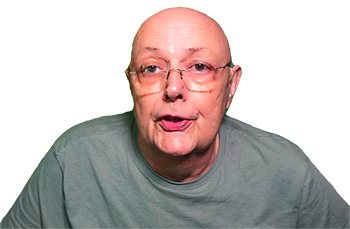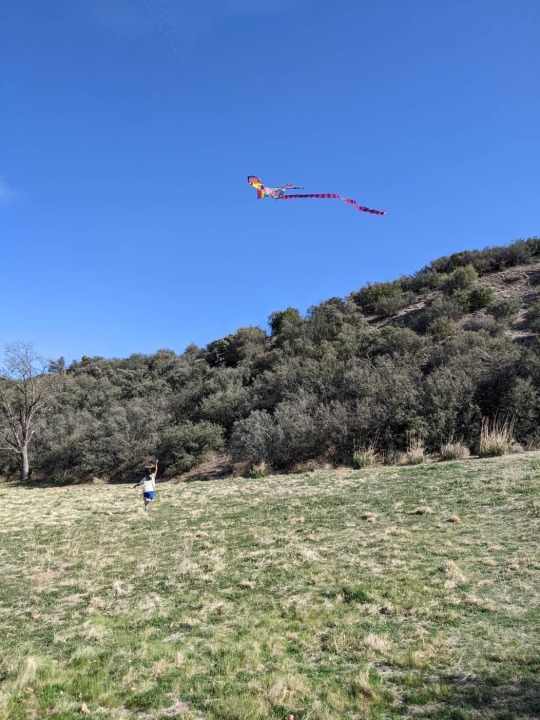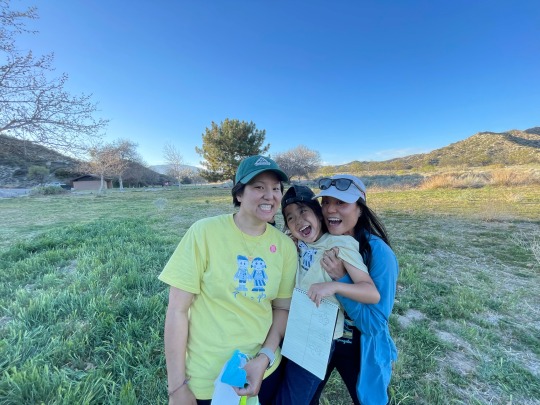#rchop
Text
Chemotherapy side Effects
Side effects
I am currently on chemotherapy, RCHOP to be precise.
I am now midway between cycles 3 and 4 and the side effects are beginning to make themselves known to me. I thought at first, I had got away with it without suffering any but I got that wrong.
Hair loss
The most obvious side effect is the hair loss, prior to starting this regimen of chemo I had already been warned that I…

View On WordPress
0 notes
Text
Wednesday 10/5/22
7 AM -- Brother’s b’day. Old man. Slept well in hospital. Tech comes to wheel Mick to CT scan. Abdominal fluid drainage after.
Young oncologist comes to room around 8. Mick still not back. I ask questions. Confirms it’s diffuse large B-cell lymphoma. “Doesn’t have B symptoms. Good,” I ask. Explains additional testing will tell us more. Symptoms came on like fright train.
9 -- Call Mare w/update. She’s leaving for dentist at 9:30. Will call her before if hear anything.
Mare calls, crying. Says she got into accident but is okay. Tractor trailer ran red light & hit her. Holy cow. In ambulance, on way to hospital checkout. I talk to ambulance driver. Says she’s okay.
Called Tammy. She went to hospital to check on her. Had CT, body head. 2 broken ribs. Everything else okay.
Hang around hospital, morning, afternoon. Oncology team finally comes. 3 docs. Allison Winter lead doc. Lymphoma expert. Young, pretty. Has CNY roots. From Corning. Husband from Fulton. Mentions bringing back Dino BBG next time. Sits by bed. Gently explains Mick’s lymphoma, almost childlike. But not condescending. Like her.
Says Mick will be feeling better by time he leaves. PET scan for staging. Echo cardiogram. Mentions calcium levels high. Having first chemo treatment Friday. RCHOP. Treating with ‘curative intent.’
4 PM -- Head out for walk. Up Euclid. West then East. No bars except Holiday Inn & Intercontinental Hotel. IPA at Holiday Inn. Walked to Case Western Reserve University campus. Quick drink at Courtyard Marriott. Black woman bartender. Comments on my blowpop. Says she wants one.
Call Schlem from patio. Mare should sue. Value of 2 broken ribs?
Scoth & soda at Intercontinental Inn on return walk.
7:45 -- Back at hospital room. Mick mad. Freaked out. I was out too long. Said it was only going to be 2 hours.
Hang at hospital. Asleep by 11 pm ish.
0 notes
Text
CHOP is the acronym for a chemotherapy regimen used in the treatment of non-Hodgkin lymphoma. CHOP consists of:
Cyclophosphamide, an alkylating agent which damages DNA by binding to it and causing the formation of cross-links
Hydroxydaunorubicin (also called doxorubicin or adriamycin), an intercalating agent which damages DNA by inserting itself between DNA bases
Oncovin (vincristine), which prevents cells from duplicating by binding to the protein tubulin
Prednisone or Prednisolone, which are corticosteroids.
Sometimes the chimeric anti-CD20 monoclonal antibody, rituximab, is added to this treatment regimen to form the R-CHOP regimen.
6 notes
·
View notes
Photo

At Noon in PA On The Big 10 Network!!! #RChop (at Anthony Allerton Art) https://www.instagram.com/p/CWf5QbWLePTIYHSPt0et0Iu2_kv5h6OONgtrIg0/?utm_medium=tumblr
0 notes
Text
Understanding the mechanisms of r-chop resistance in b-cell lymphoma
Understanding the mechanisms of r-chop resistance in b-cell lymphoma
White blood cells or lymphocytes are the soldiers of our immune system that patrol the body via the lymphatic system. While their primary role is to protect the body by scavenging invaders, they can sometimes go rogue and become the enemy. Lymphoma, a type of blood cancer, results from the uncontrolled proliferation of lymphocytes. They are classified as Hodgkins and Non-Hodgkins lymphomas on the…
View On WordPress
0 notes
Photo

This is my "I'm sweaty!" look after giving three chemos in two hours. #superhappy #chemotherapy #chemoprovider #chemocertified #RN #BMTRN #BMT #Oncology #RCHOP #nightshift #nurse #nursing
#rchop#chemocertified#chemoprovider#oncology#nurse#bmtrn#bmt#nursing#nightshift#rn#chemotherapy#superhappy
1 note
·
View note
Text
So yesterday was the start of Round 5
It was not super excellent.
My veins aren’t the greatest to start with and now they are fairly scarred and I almost passed out getting my needle in (even though I’ve been poked a zillion times this year).
We were there all day again and I managed to get over half of my bar prep done but today I am dragging.
My body is tired. I’m sleepy because I couldn’t sleep for most of the night. Bloaty. Feeling heavy. Queasy. Blech.
BUT we are planning my PET scan for after I take the bar exam so that is something to look forward too.
4 notes
·
View notes
Text







Today was the camping trip and it was a good day.
I woke up feeling pretty nauseous. Maybe the guac fries were too much? I didn’t eat much of them.. Ate some ochazuke and banana to take my meds (final steroid “P” of RCHOP) but still feeling pretty nauseated. I took the anti-nausea medicine and within 10 min - felt better. Was able to get myself together to pack the car and go.
After that bout of nausea, today felt like an ordinary non-cancer day! I spent the day w the Terakoya families, helping cook meals, put up the tents, play w kids, eat, and just have fun. Even had curry for dinner! Probably the first flavorful thing I had since chemo. 
But I didn’t want to push my limits. Geoff came around 10 to pick me up. Got home around 11:29, ate a banana to take my evening meds and now I’m in bed.
Lisa is w Meisa at the camp site. She is going to pack our stuff and bring Meisa home tomorrow. My mom stayed here from 9:30am- 11:30pm to watch Reymi since Geoff is in crunch time at work.
It was a family effort and I’m so grateful to have been able to participate in the activities today.
0 notes
Photo

Artificial Insproamination - Worked on this doodle over the course of about four weeks while convalescing after my final RCHOP #chemotherapy treatment. According to @procreate it contains 25422 strokes created over 24 hours and 28 minutes of realtime. This was also my first drawing experiment with Apple’s Pencil. https://www.instagram.com/p/B-zw6_FFNzs/?igshid=15b5es0pqpuag
0 notes
Text
Harper asked:
Generally speaking, at what stage of non-Hodgkin lymphoma would a person be too sick to work? Also what kind of medications would they be on? I'm still working out details for the overall plot since I just started work on it but I was thinking he may have diffuse large B-cell lymphoma? Which if I’m not mistaken is a fast moving strain? I think a fast moving strain would work better than a slow moving one for the story I want to do? He was supposed to have had it a few years ago, it went into remission and now he’s relapsed.
Hey there Harper! Thanks for your ask!
First, let’s back up and explain to the audience what NHL actually is. Lymphoma is a type of cancer that starts is the immune system, specifically in the lymphocytes, a type of white blood cell.
The American Cancer Society says that the most common type of NHL in the US is B-cell NHL. The thing about it is that there are subtypes that grow faster or slower. Also, NHL seems to be able to grow just about anywhere. Image courtesy of the ACS:

Signs and symptoms of NHL include:
Enlarged lymph nodes
Fever
Sweating and chills
Weight loss
Fatigue (extreme tiredness)
Swollen abdomen (belly)
Feeling full after only a small amount of food
Chest pain or pressure
Shortness of breath or cough
As for your question about treatment, here again from the ACS website:
Diffuse large B-cell lymphoma (DLBCL) tends to grow quickly. Most often, the treatment is chemotherapy (chemo), usually with a regimen of 4 drugs known as CHOP (cyclophosphamide, doxorubicin, vincristine, and prednisone), plus the monoclonal antibody rituximab (Rituxan). This regimen, known as R-CHOP, is most often given in cycles 3 weeks apart. Because this regimen contains the drug doxorubicin, which can damage the heart, it may not be suitable for patients with heart problems, so other chemo regimens may be used instead.
... Most doctors will give 6 cycles of R-CHOP as first-line treatment. After several cycles, doctors may get imaging tests such as a PET/CT scan to see how well treatment is working. People who have a higher risk of the lymphoma coming back later in the tissues around the brain and spinal cord may be treated with chemo injected into the spinal fluid (called intrathecal chemotherapy). Another option is to give high doses of methotrexate intravenously. (This drug can pass into the spinal fluid.)
One of the big problems with RCHOP is that it can apparently lead to cardiac depression, to the point that characters may have scans to find out how their heart is doing before even considering treatment.
It seems, from the stories I’m reading on the Cancer Survivors Network, like RCHOP isn’t poorly tolerated at all (relatively speaking) -- that link has resources specific to that form of therapy. But your character could be one of the ones where the drugs do some damage to their heart and they wind up with cardiomyopathy.
The point at which your character is unable to work is going to depend on a few things, chief among them the kind of work he does; if it’s physically demanding work, he’ll have more difficulties sooner, whereas with a desk job, he’ll be able to hide it for longer. You mentioned that this is a remission patient, but what I’m not 100% sure on is how much energy they’ll have, having gone through this before. There’s also the psychological implications of having been through cancer treatment once: many, many cancer survivors report a pervasive fear of what if it comes back.
I’m inclined to say it would actually have to get pretty far before he actually can’t work anymore, although chemo, even “relatively benign” chemo like RCHOP, is exhausting. So maybe he changes his work schedule around his chemo days and he’s tired and cranky. Also, you mentioned in conversation that he’s hiding his disease, so he might have behavior changes that the astute people in his life will notice. Perhaps it’s not even his physical changes that are noticed, but his behavior changes!
I hope this is what you needed, Harper!! I’d check patient stories here, here and here for a better idea of how patients actually feel on the chemo.
Best of luck building your story.
xoxo, Aunt Scripty
(Samantha Keel)
disclaimer
Asks accepted 1st-3rd of every month, but the ask box is always open on Patreon.
Free eBook: 10 BS “Medical” Tropes that Need to Die TODAY!
36 notes
·
View notes
Text
Welcome to Social Media Gail
So, I am not sure if it’s because I was away in Malawi, Africa for four years while Tumblr was becoming popular or if it’s simply because I am illiterate to anything and everything regarding the Internet but I am definitely way late and overdue for the Tumblr World. Better late than never, I guess!
Here’s the thing, I am 27 years old and feel like I have been given decades of life experience that far surpass anything I thought I could handle. The most recent one being diagnosed with Non-Hodgkin B Cell Lymphoma in October of 2016. What the heck is that, right?!?!?
I had no idea really until I met with an oncologist and life got real. Basically, it’s a cancer of the lymph nodes except for me (because I can’t do anything ordinary) it is in my uterus! Weird? Yes. Scary? Absolutely. Something that will knock me down? NO WAY. November 7, 2016 is when I decided that I was not going to let Lymphoma bring me down. It was not going to claim my life and I was certainly not going to let it be the reason for any more tears on my pillow. Six rounds of crazy intense chemotherapy drugs known as RCHOP in between 3 weeks of each other was all I was going to let Lymphoma have. I finished round 4 last week and have 2 more to go! WOO HOO!!!
As I am reaching the end of cancer journey, I have realized that this is something that I need to share with the world. A cancer diagnosis does not have to be the end and it certainly does not mean you stop living. It may mean that your daily routine is on pause and it may mean that you have to nap more, but you can still laugh, enjoy time with your loved ones, and most importantly you can definitely still have ice cream (although I’m opting for nicecream these days). As I start putting my journey into words, I hope you can find some peace and comfort in my story no matter what you're struggling with and whatever may plague you because things do get better and trials and tribulations do pass. My life is a testament of that, I promise.
2 notes
·
View notes
Text
JuniperPublishers-Primary Lymphoma of Thyroid: A Diagnostic Dilemma
Journal of Surgery-JuniperPublishers
Abstract
Primary Lymphoma of Thyroid is a rarely encountered clinical entity that occurs in late age intrinsically associated with Hashimotos thyroiditis, comprising of 0.6 to 5 per cent of thyroid cancers in most series. We present a case of B-cell origin thyroid lymphoma. The diagnosis was made by combined histology and immunochemistry. A 60-year-old woman presented with an enlarging neck mass with odynophagia. On admission, the sonogram of the thyroid gland showed an enlarged mass and CT scan demonstrated diffuse enlargement of the thyroid. The histological investigation revealed the presence of a diffuse large B-cell non-Hodgkin’s lymphoma. The patient underwent chemotherapy. Clinicians should include primary thyroid lymphoma in the differential diagnosis of a rapidly enlarging thyroid mass. Thyroid ultrasound and fine needle aspiration cytology, using flow cytometry and Immunohistochemistry, remain the main modalities used to confirm the presence of lymphoma. The prognosis is generally excellent but can be varied because of the heterogeneous nature of thyroid lymphomas. Despite its rarity, PTL should be promptly recognized because its management is quite different from the treatment of other neoplasms of the thyroid gland.
Keywords: Primary Thyroid Lymphoma; Lymphocytic thyroiditis; Non-Hodgkin Lymphoma Thyroid Cancer
Abbreviations: PTL: Primary Thyroid Lymphoma; MALT: Mucosa-Associated Lymphoid Tissue; HT: Hashimoto’s Thyroiditis; DLBCL: Diffuse Large B-Cell Lymphoma; IHC: Immunohistochemistry; RCHOP: Rituximab-Cyclophosphamide-Doxorubicine-Vincristine-Prednisone; FDG-PET: Fluorine-18-Fluorodeoxyglucose Positron Emission Tomography; FNAC: Fine Needle Aspiration Cytology
Go to
Introduction
Primary thyroid lymphoma (PTL) is a rare disease that continues to produce diagnostic and therapeutic dilemmas. PTL are very rare and account for only 5% of all thyroid malignancies and approximately 3% of all non-Hodgkin’s lymphoma. The annual incidence of PTL is one or two cases per million [1]. It is more prevalent in females, in the sixth to seventh decade of life with female to male ratio of 3:1 [2].
Most thyroid lymphomas are of B-cell origin. There appear to be two distinct clinical and prognostic groups of these rare tumors. The more common subtype, comprising of up to 70% of cases, is a diffuse large B-cell lymphoma. This subtype appears to have the most aggressive clinical course with almost 60% of these tumors diagnosed with disseminated disease. The other subtype is mucosa-associated lymphoid tissue (MALT) lymphomas comprising of approximately 6% to 27% of thyroid lymphomas. These have a relatively indolent course [3].
The most common presentation of thyroid lymphoma is a rapidly enlarging, painless goiter. Other symptoms such as dyspnea, dysphasia, and hoarseness may arise as a result of the pressure effects of the mass. Rarely, stridor or superior vena cava obstruction can occur. Cervical lymphadenopathy is present in the majority of cases [4]. Classic B-type symptoms such as weight loss and night sweats occur less commonly and have been reported in approximately 20% of patients. The majority of patients (30%-60%) are biochemically euthyroid at presentation [5].
The underlying pathogenesis of PTL remains obscure. The major risk factor for PTL is the presence of Hashimoto’s thyroiditis (HT). Interestingly, although the incidence of HT in patients with PTL approaches 80%, only 0.6% with HT will go on to develop PTL [6]. The association is postulated to result from the development of intrathyroidal lymphoid tissue in HT. It has also been postulated that the stimulation of antigens that are specific to the thyroid microenvironment are necessary for the development of PTL [7]. This theory is supported by the fact that more than half of thyroid lymphoma patients have a previous or concurrent diagnosis of chronic lymphocytic thyroiditis,suggesting that chronic antigenic stimulation may play a role in pathogenesis [8].
The overall prognosis of thyroid lymphoma has been described by the British Thyroid Association guidelines as “generally excellent”; however, prognosis is subtype dependent, and 5-year survival rates can be as low at 45% [9]. The management and prognosis of PTL has changed with the advent of multimodal adjuvant therapy and increasing interest in and research into targeted therapies. Here, we report a case of diffuse large B-cell lymphoma (DLBCL) manifesting as a primary disorder of the thyroid gland. The importance of recognizing primary thyroid lymphoma lies in the fact that this disease is quite curable without the need for extensive surgery if recognized early and treated appropriately.
Go to
Case Report
A 60 years old woman presented to surgery outpatient department with a rapidly growing (2 weeks) thyroid enlargement along with mild odynophagia. The patient had no history of fever, night sweats or weight loss. She was a non-smoker and had no previous neck radiation exposure. The remaining medical and family history was unremarkable. Hormonal evaluation revealed increased thyrotrophic levels [TSH 32.32ΙU/ml, NR 0.3-4.5], normal thyroxine [123 μg/dl, NR 66-181] and normal tri-iodothyronine levels [1.81 nmol/L, NR 1.1-3.1]. The antithyroglobulin antibodies were markedly increased (anti-Tg 1300 IU/ ml, NR<60). The initial sonogram indicated enlargement of bilateral lobes with altered echo texture and micro calcification. Bilateral cervical lymph nodes were mildly enlarged. Patient was advised FNAC thyroid swelling which revealed degenerated and intact follicular cells and large number of lymphoid cells with prominent immature component (Figure 1). Diagnosis of florid lymphocytic thyroiditis with suspected lymphomatous transformation was rendered. Patient was given steroids and L-thyroxine, 50μg replacement therapy daily. She responded well initially. But after 3 months, she came back with history of fever, weight loss, malaise and bilateral cervical swellings.
The patient underwent imaging of the neck for further evaluation. CECT Cervical region demonstrated diffusely enlarged thyroid, isotense on noncontract and showed enhancement on contrast scan. Multiple enlarged lymph nodes bilateral cervical and axillary region were also noted (Figure 2). CECT abdomen and thorax revealed abdominal, mediastinal, cervical, axillary and inguinal lymphadenopathy along with hepatosplenomegaly possibility of Koch’s or Lymphoma were suggested (Figure 3).
Cervical lymph node biopsy was received three months after initial FNAC. Biopsy showed Non Hodgkin’s Lymphoma; Diffuse Large B-Cell Lymphoma with marked necrosis and extra nodal extension (Figure 4 A & B). On Immunohistochemistry (IHC) lymphoma cells were: CD20 and CD10 positive (Figure 5A & 5B). According to Ann Arbor guidelines for Primary Thyroid Lymphoma the patient now had stage IV E disease. Patient underwent 6 cycles of chemotherapy with RCHOP (Rituximab- Cyclophosphamide-doxorubicine-vincristine-prednisone). She is now on regular follow up and is doing well.
Go to
Discussion
Primary Thyroid Lymphoma (PTL) is a lymphomatous process involving the thyroid gland without contiguous spread or distant metastases from other areas of involvement at diagnosis. It is a rare tumor constituting about 1-5% of all thyroid malignancies and 1-2% of all extra nodal lymphomas, with an annual incidence of two per million [1]. Most patients present in the 7th decade of life (average age 67 years) [2]. Preexisting chronic autoimmune (Hashimoto’s) thyroiditis is a wellrecognized risk factor predisposing to the development of PTL. The risk of PTL among patients with autoimmune thyroiditis is 40 times greater as compared to that of the general population. It takes a long time (20-30 years) to develop PTL after the onset of lymphocytic thyroiditis [6]. Normally, the thyroid gland does not contain native lymphoid tissue. Intra-thyroid lymphoid tissue develops under pathological conditions, and mainly in patients with autoimmune thyroiditis, probably as a result of chronic antigenic stimulation. PTLs are classified based on pathological subtypes, with each carrying a different prognosis. The two most common subtypes are diffuse large B-cell lymphoma (DLBCL) and MALT lymphoma. DLBCL accounts for up to 70% of all PTLs [3].
DLBCLs are typically positive for MS4A1 (CD20), with 75% also positive for the BCL6 ontogeny and up to 50% positive for the BCL2. DLBCL itself has now been divided into two major cell-of-origin phenotypes with differing prognoses: a favourable germinal center B-cell-like lymphoma and a more aggressive activated B-cell like subgroup with over expression of the activated B-cell immunophenotype markers IRF4 (MUM1) and FOXP1 [10]. This group of patients, those who over expressed IRF4 (MUM1) are associated with high expression of NM23-H1 had a poorer prognosis. MALT lymphoma of the thyroid follows a relatively benign indolent clinical course and thus is more likely to present at an earlier stage and, historically, demonstrate a better response to treatment [3].
A rapidly growing (usually within 1-3 months), painless thyroid enlargement, either in the form of goiter or discrete nodule, is the most common clinical presentation in PTL. Pressure symptoms are often present. This clinical presentation can be confused with a plastic thyroid carcinoma. Because of the frequent coexistence of Hashimoto’s thyroiditis, many patients are hypothyroid or under thyroid hormone replacement therapy and circulating antibodies to thyroid peroxidise are positive in these patients (60%) [6]. Classic B-type symptoms of fever, night sweats and weight loss are less common.
Ultrasonography is the imaging modality of choice and can typically show one of three patterns: nodular, diffuse, or mixed. When presenting as a solitary mass, the radiological appearance can resemble that of anapaestic thyroid carcinoma but can be distinguished by its homogenous appearance as well as thelack of calcification, necrosis, and cystic degeneration within the nodule .When diffuse lymphoma is identified, it appears as a heterogeneous hypoechoic parenchyma with the presence of structures resembling septae. Magnetic resonance imaging may be more sensitive than computed tomography in the detection of extrathyroidal involvement. Fluorine-18-fluorodeoxyglucose positron emission tomography (FDG-PET) can be useful in staging and restaging or in assessing response to treatment in PTL [11]. Once the diagnosis of PTL has been established, imaging of the entire body is necessary in order to stage the patient accurately. The Ann Arbor criteria, similar to staging of lymphoma at other sites, are used for the staging of PTL.
Fine needle aspiration cytology (FNAC) is the initial technique of choice for pathological assessment of a thyroid lesion. It may present diagnostic challenges for the pathologist. Low grade lymphomas can be mistaken for chronic thyroiditis. PTL is usually of large cell type and a diagnosis of large cell lymphoma is easy on FNA and features like lack of cellular cohesion and presence of lymphoglandular bodies in the background are features strongly against a diagnosis of annalistic carcinoma. Immunocytochemistry confirms the lymphoid origin of the cells and their B or T- lineage. By contrast, cytological diagnosis of MALT- lymphomas is difficult, because of heterogeneous appearance of the neoplastic infiltrate. Distinguishing severe chronic thyroiditis from lymphoma puts us as pathologists in great difficulty when the inflammatory exudates is so expressed that it effaces the normal thyroid architecture. Moreover, such thyroiditis leads to cellular aggregates that could be classified as lymphoepitelial lesions. Morphologically, in chronic lymphocytic thyroiditis, the lymphocytes are a mixture of B and T cells but mostly T-cells. Scattered larger lymphoblasts, immunoblasts and plasma cells are also present in cases with chronic lymphocytic thyroiditis. Germinal centers are often prominent [12]. The gold standard for histologic diagnosis is considered the core needle biopsy or surgical biopsy to ensure that aggressive histologies are not missed. It yields more tissue than FNAC and maintains the architecture of the tissue and can facilitate the distinction among HT, PTL, and anapaestic carcinoma; which is not always possible with FNAC.
The gold standard for management of DLBCL is multimodal because of the typically aggressive clinical course. Surgical intervention may be required for palliation in the setting of critical airway obstruction. Intervention in this setting carries high morbidity and should be approached with caution [13]. The Surgery alone has been proposed for the management of localized intra-thyroidal lymphoma. Chemotherapy can control distant dissemination of the disease, while radiation therapy can achieve local control of the lymphoma. Most commonly, radiation therapy is used after 3-6 courses of chemotherapy. Rituximab has recently been effectively used (with cyclophosphamide, mitoxantrone, vincristine, and prednisolone) in elderly patients with diffuse large B-cell lymphoma of thyroid [14].
The identification of mutations and upregulation of cellsignaling pathways has revolutionized cancer treatment in recent years. Although molecular testing for mutations in the BRAF proto-oncogene is now used routinely to aid diagnosis and guide treatment of papillary thyroid carcinoma. Protein kinase inhibition has not yet been applied in the management of thyroid lymphoma. These findings suggest that it may be a potential therapeutic target for treatment [15].
The prognosis of DLBCL can be estimated by using the International Prognostic Index, which uses only clinical parameters. There are two indexes: one for all patients, called the “international index,” and one that is age adjusted, called the “age-adjusted international index.” The international index score is based on age, tumor stage, serum lactate dehydrogenase concentration, performance status, and number of extra nodal disease sites. The age-adjusted international index score is based on tumor stage, lactate dehydrogenase level, and performance status. These indexes stratify patients into four risk groups with specific 5-year survival rates, which, when compared with the Ann Arbor staging system, appear to be more accurate in predicting survival [15].
Go to
Conclusion
We describe a very rare case of primary thyroid lymphoma. Our report emphasizes the need for clinical awareness in such perplexing cases which clearly require a multidisciplinary approach for early diagnosis of such lesions and preventing delay and unnecessary surgery. Diagnosis is often difficult but clinical and radiological suspicion along with pathological features should be taken in account to reach correct diagnosis.
To read more articles in Journal of Surgery
Please Click on: https://juniperpublishers.com/oajs/index.php
For More Open Access Journals in Juniper Publishers
Click on: https://juniperpublishers.com/journals.php
0 notes
Photo






💁🏽💁🏽 Getting wiggy with it 💁🏽💁🏽
So first of all I don’t want anyone to think I’m in anyway ashamed of my bald head because as well as experimenting with wigs, scarves and hats I’m also more than happy to go out with my bald head. It took me a few days to get used to and I couldn’t always look people in the eye but now I’m so used to it that I don’t even think about it. But it has been quite fun trying out new looks and new ways to cover my head when it gets a bit chilly.
I was lucky enough to be put in touch with an amazing 21-year-old girl local to me who has also been through lymphoma - she gave me some amazing advice and if it wasn’t for her I would have found it a lot harder knowing where to look for wigs and it was also just nice having someone to speak to about the changes I’ve been going through. She’s in remission now and is a true inspiration and I would also encourage others to look at her blog too (believingyourebeautifulbyabby).
So far I have two wigs - one human hair and one synthetic. There is quite a big difference between the two in terms of quality. The human hair one was quite expensive but it was definitely worth the money because it looks much more realistic - so far several people haven’t been able to tell I’ve been wearing a wig. It came from a hair shop in Bromley (Sabina Hair). My step mum ordered me the synthetic one from ebay - I can send links to anyone who is interested. The only thing that tends to give the wig away - especially the synthetic one is the hair line at the front so I’ve bought a range of little head bands and hats to cover the front - Primark is great for these at a cheap price and I plan to have a look around for more in other places like Zara and Forever 21 so I will do an update.
I also bought a range of scarves from an African hair shop because they tend to come in really beautiful colours - I will do a post soon on different ways to tie headscarves because there are literally so many different ways to wear one.
In terms of caring for my wigs, I’ve just ordered some T-range fibre wig shampoo and conditioner so once I have washed them I will do a review of the brand. So far I comb them very gently with a wide tooth comb and this seems to detangle them without ripping a load of the hair out.
I was lucky enough to have my step mum take me out shopping for wigs and other bits like a wig stand, eyebrow gel colour, false eyelashes etc. She prepared me in every way possible for the hair loss process - luckily I still have my eyelashes and eyebrows for the moment though. We also went for lunch and turned the day into a proper girly day out. Hair loss doesn’t have to be all doom and gloom - it can be fun if you make it fun and thanks to my step mum by the end of our shopping day I felt so much better and was actually excited to try everything out. I will always be grateful to her for that.
So far I’m enjoying the stress-free nature of being bald - I don’t have long hair to wash or blow dry or spend ages detangling - I can just wake up and go but I’ve still got the option to have hair if I want it. Its like a whole new world and I’ve learnt to love my bald head.
0 notes